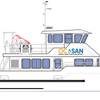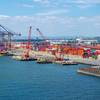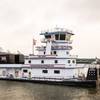Five years after the sinking of the Estonia ferry, in which 852 people were killed, relatives of the victims are still seeking the full facts, and some believe that the ship was sabotaged.
The Estonia sank in rough seas off the Finnish coast early on Sept. 28, 1994, in an accident investigators blame on a design flaw that allowed heavy waves to knock the ferry's bow door ajar and flood the car deck.
However, family members have long been skeptical of this conclusion, made by a three-nation commission after an extensive probe, and have asked for new light to be shed on the disaster.
Conspiracy theories have surrounded the accident since the first news of the sinking broke. A new theory, which claimed explosives were sighted in ship's wreckage, emerged this year in the Swedish media.
Media reported in August that a report commissioned by German shipyard Meyer Werft, which built the Estonia, would say video footage showed bombs in the hull. The commissioners say the report is due out this month.
However, Finnish members of the investigating commission issued a special memorandum last week to reject in advance any possible bomb theory, saying objects identified as explosives were actually a part of a broken pallet and a tarpaulin.The Finnish investigators said they stand by their original conclusion, which stated that human error on the part of the commanders of the 15,598-ton Swedish-owned vessel exacerbated the flooding caused by the faulty bow door.
The Estonia, a RoRo car and passenger ferry, was sailing in rough seas at midnight when it started taking on water and capsized, trapping most of the passengers inside. The ferry sank in minutes, which surprised many experts who knew that ships often manage to stay afloat for a while after capsizing. The report said the trouble was aggravated by the fact that the Estonia, sailing from Tallinn to Stockholm, turned towards the wind in six-meter (20-ft.) waves, speeding the flooding of the car and accommodation decks.
Sponsored Content
Lower carbon intensity fuels to support your operations

Subscribe for
Maritime Reporter E-News
Maritime Reporter E-News is the maritime industry's largest circulation and most authoritative ENews Service, delivered to your Email five times per week









